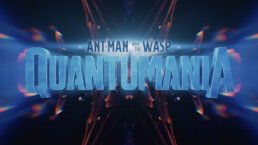INTRODUCTION
Visa asked Perception to share our expertise and position on the use of haptic signatures within user interfaces and to expand upon how such haptic signatures might be utilized as a branding opportunity for Visa.
Perception explored this area extensively in the past for other clients. The following pages include a brief introduction into our findings in the area of haptic feedback and how it intersects with the worlds of technology and branding.
HAPTIC FUNDAMENTALS
The term Haptics broadly refers to any form of interaction involving the sense of touch. This includes people communicating to one another with touch as well as the act of recognizing objects through the sense of touch, known as haptic perception. But for the purposes of this white paper we will be focusing on haptic technology, which refers to the various ways that artificial devices can be used to transmit information to users.
Haptic feedback from devices can be achieved by applying forces, motions, or vibrations to the user. While the use of haptic feedback in technology interfaces like airplane controls and industrial systems has been around for decades, the availability of new interfaces like multi-touch and gestural control, as well as the prevalence of mobile devices that deliver haptic feedback, have led to a rapid increase in the interest and exploration of haptic technology.
HAPTIC PSYCHOLOGY
One of the important aspects to note about haptic feedback is that the sense of touch, while powerfully evocative, works best in conjunction with the other senses, especially vision. Research has long established the strong link between visual and tactile identification of objects, and this integration has also been linked to the fundamental neurology of the human brain, with some variations attributable to context. While all senses are linked to some degree, and haptic input also tracks to auditory cues, the link between haptic and visual senses, known as visuo-haptic integration, is particularly strong.
Practically, this means that when introducing any type of haptic technology, establishing the link between the haptic cue and a visual cue is crucial. But this can work in favor of the haptic interface since the haptic cue can then be anchored to any emotional response already associated with the visual stimulus. Clearly, adding additional senses like sound into the anchoring process can only help to strengthen the emotional link established for the haptic cue.
Interestingly, there is an unexpected benefit of adding haptic feedback into an interface. Research has also shown interfaces that include haptic feedback engender a greater sense of urgency in the user, making them feel more connected to and in control of the interactions they have.
HAPTIC BRANDING
Of course many products incorporate a tactile dimension into their presentation or branding. Often these are inherent to the products themselves, such as the texture of a table’s woodgrain or the warmth of a handbag’s leather. Or the brand may incorporate a unique shape, such as the feel of a Coke bottle in your hand. Researchers have shown through experiments that such haptic feedback increases brand awareness.
For Visa it seemed quite logical, that a similar branding effect would accompany the use of haptic technology signatures if they can be successfully linked to the brand in the minds of customers. For brands whose products (transactions) are fairly virtual, and for whom even the existing physical manifestations (plastic cards) are likely to become increasingly obsolete, it would seem that Visa is uniquely positioned to explore the forefront of haptic branding.
CONCLUSION
Brands looking for interesting ways to attract and retain customers need to pursue this technology and take it further. They need to take advantage of the well-established physiology and psychology of visuo-haptic integration and establish a haptic signature mark using their already strongly recognized brand values. These can be conceptualized and built in many different forms but ultimately the added value helps strengthen the brand as a brand with a vision of the future.
Contact us for any project utilizing haptic technology to strengthen your brands future.
REFERENCES/CITATIONS
REFERENCES:
1. Marc O. Ernst & Martin S. Banks (2002). “Humans integrate visual and haptic information in a statistically optimal fashion”, Nature, 415,429-433
2.A. Amedi, G. Jacobson, et al (2002). “Convergence of visual and tactile shape processing in the human lateral occipital complex”,Cerebral Cortex, 12(11), 1202-1212
3.S. Gepshtein, J. Burge, M. O. Ernst & M. S. Banks (2005). “The combination of vision and touch depends on spatial proximity”, Journalof Vision, 5(11), 7
4.H. B. Helbig, & M. O. Ernst (2007). “Optimal integration of shape information from vision and touch”, Experimental Brain Research,179(4), 595-606
5.Joshua Aman, Chia-hao Lu, Jürgen Konczak (2010). “THE INTEGRATION OF VISION AND HAPTIC SENSING: A COMPUTATIONAL &NEURAL PERSPECTIVE”, Cognitive Critique, Vol. 2
6.S. Lacey, & K. Sathian (2012). “Representation of Object Form in Vision and Touch” in M. M. Murray & M. T. Wallace (Eds.) The NeuralBases of Multisensory Processes, CRC Press
7.Marianna Obrist, Sriram Subramanian, et al (2015). “Emotions Mediated Through Mid-Air Haptics”, Proceedings of the 33rd Annual ACMConference on Human Factors in Computing Systems
8.Mathias Streicher (2012). “From the Hands to the Mind: Haptic Brand Signatures”, Advances in Consumer Research, Volume 40
PHOTO CREDITS:
International Business Times article “Sony’s PS3 Hacked To Allow Pirated Games” (6 January, 2011)
Hackaday article “HAPTIC FEEDBACK ROUNDUP” (28 March, 2008)
YouTube video “Stick shaker stall warning Boeing 737 MPS Flight simulator” from MPL Simulator Solutions (4 October, 2012)Wired article “Everything You Need to Know About the Apple Watch” (9 September, 2014)
Danny Gonzalez
Daniel Gonzalez started his career at R/GA after graduating from St. Johns University where he received a BS in Business. For 6+ years he lead the visual effects team for feature films, global ad agencies and broadcast networks. In the Fall of 2001, Gonzalez co-founded Perception with an RGA colleague, Jeremy Lasky. They formed a motion graphics studio that lead the revolution in creating groundbreaking design and visual effects on the desktop. Now in it's 18th year, the studio has sharpened its focus to become global experts in designing futuristic UIs for both feature films and for the most powerful brands in technology. From Iron Man to IBM, from The Avengers to SpaceX, the studio has an extremely unique niche that truly bridges the gap between science fiction and science fact. Gonzalez co-leads new business initiatives, shapes the company’s growth, while overseeing a full-time staff of 15.
Perception has been featured on Engadget, Art of the Title, Cinefex, Gizmodo, ACM Siggraph, ADC nominated at SXSW for Best Title Sequence and twice nominated for an Oscar for Best Visual Effects. Gonzalez has lectured/guest speaker on design and technology at OTIS, SCAD, Boeing, Carnegie Mellon’s ETC and NYU ITP. He's also given presentations and workshops at some of the biggest tech giants in the world including Samsung, SpaceX, Intel, Microsoft, GE, Northrop Grumman, Audi, Mercedes, Ford, Chrysler and Apple.
Gonzalez’s past work has been showcased on the film screen and televisions across the world, while Perception’s work can be experienced on the big screens, in smart homes, automobiles and mobile devices across the planet!


